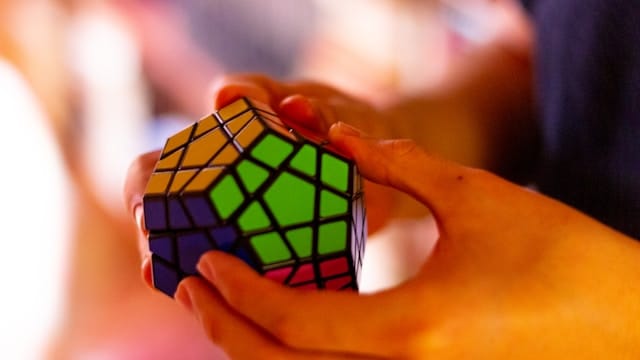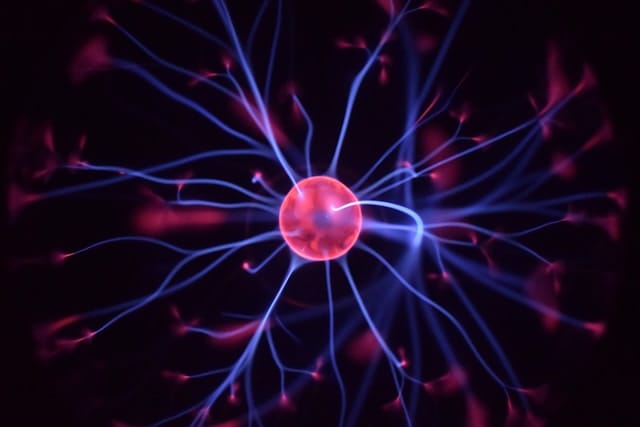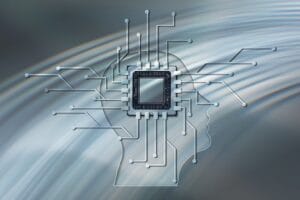Deep brain stimulation (DBS) is a revolutionary neurosurgical procedure that has transformed the treatment landscape for various neurological disorders. By delivering targeted electrical impulses to specific areas of the brain, deep brain stimulation can alleviate symptoms of conditions such as Parkinson’s disease, essential tremor, and obsessive-compulsive disorder. This blog post will provide you with seven key insights into deep brain stimulation, exploring its mechanism, applications, benefits, challenges, and future prospects.
Introduction to Deep Brain Stimulation
Deep brain stimulation is a surgical intervention that involves implanting electrodes in specific regions of the brain. These electrodes are connected to a pulse generator, which delivers electrical impulses to modulate neural activity. This modulation can help improve motor function, reduce tremors, and manage psychiatric symptoms, making deep brain stimulation a versatile option in the treatment of various neurological disorders.
The origins of DBS can be traced back to the early 1980s when researchers began experimenting with electrical stimulation to treat movement disorders. Since then, the technique has evolved, with advancements in technology and a growing understanding of the brain’s circuitry. As a result, deep brain stimulation has become a standard treatment for several conditions, significantly improving the quality of life for countless patients.
In this article, we will delve into the intricacies of DBS, examining how it works, its clinical applications, potential benefits, and limitations. By the end of this post, you will have a comprehensive understanding of deep brain stimulation and its role in modern medicine.
Understanding How Deep Brain Stimulation Works
DBS involves several components and processes that work together to achieve its therapeutic effects. Understanding these mechanisms is crucial for appreciating the impact of deep brain stimulation on neurological conditions.
Components of Deep Brain Stimulation
The primary components of a DBS system include:
Electrodes: These are thin, flexible wires implanted into specific brain regions. The electrodes deliver electrical impulses to modulate the activity of neurons in the targeted area.
Pulse Generator: This device, often implanted under the skin near the collarbone, generates electrical signals that are sent to the electrodes. The pulse generator can be programmed to adjust the frequency, intensity, and duration of the stimulation based on the patient’s needs.
Extension Wires: These connect the electrodes in the brain to the pulse generator, allowing for the transmission of electrical signals.
Mechanism of Action
The exact mechanism by which DBS exerts its therapeutic effects is not fully understood, but several theories have been proposed. The most widely accepted explanation involves the modulation of abnormal neural activity.
In conditions like Parkinson’s disease, certain areas of the brain exhibit excessive or abnormal firing patterns, leading to motor symptoms such as tremors and rigidity. By delivering electrical impulses to these areas, deep brain stimulation can interrupt these abnormal firing patterns, restoring more normal functioning.
Moreover, DBS may also influence the release of neurotransmitters, such as dopamine and serotonin, which play essential roles in regulating mood and movement. By modulating neurotransmitter levels, deep brain stimulation can alleviate symptoms associated with various neurological and psychiatric disorders.
Clinical Applications of Deep Brain Stimulation
DBS has a range of clinical applications, particularly in the treatment of movement disorders and psychiatric conditions. The versatility of this technique makes it a valuable option for patients who have not responded adequately to traditional therapies.
Parkinson’s Disease
Parkinson’s disease is one of the most common neurological disorders treated with DBS. Patients with Parkinson’s often experience motor symptoms such as tremors, stiffness, and bradykinesia (slowness of movement). While medications like levodopa can be effective, their efficacy may diminish over time, and patients may experience debilitating side effects.
Deep brain stimulation can provide significant relief from these symptoms by targeting specific brain regions, such as the subthalamic nucleus or the globus pallidus internus. Studies have shown that patients undergoing deep brain stimulation for Parkinson’s disease can experience improved motor function, reduced medication requirements, and enhanced quality of life.
Essential Tremor
Essential tremor is another movement disorder that can be effectively treated with deep brain stimulation. This condition is characterized by involuntary shaking, often affecting the hands, arms, and head. While medications can help control essential tremor, deep brain stimulation is particularly beneficial for patients with severe symptoms that do not respond to pharmacotherapy.
The procedure typically involves placing electrodes in the thalamus, a brain region involved in motor control. Patients often report significant improvements in their tremor severity and overall functional abilities following deep brain stimulation.
Obsessive-Compulsive Disorder
In recent years, DBS has gained recognition as a treatment option for obsessive-compulsive disorder (OCD) in patients who do not respond to conventional therapies. OCD is a debilitating condition characterized by intrusive thoughts and compulsive behaviors, significantly impacting daily functioning.
Deep brain stimulation can target specific brain circuits involved in OCD, such as the anterior limb of the internal capsule or the subcallosal cingulate gyrus. Research has shown promising results, with some patients experiencing significant reductions in OCD symptoms following deep brain stimulation.
Benefits of Deep Brain Stimulation
DBS offers numerous benefits, making it an attractive option for patients with various neurological disorders. Here are some of the key advantages associated with this treatment:
Improved Quality of Life
One of the most significant benefits of DBS is its ability to enhance the quality of life for patients. Many individuals experience a marked reduction in symptoms, allowing them to regain control over their daily activities and improve their overall well-being.
Patients often report increased mobility, reduced pain, and improved social interactions after undergoing deep brain stimulation. This improvement in quality of life can lead to greater independence and a more fulfilling lifestyle.
Customizable Treatment
Deep brain stimulation is a highly customizable treatment option. The pulse generator can be programmed to adjust the stimulation parameters based on the patient’s specific needs and response to therapy. This flexibility allows healthcare providers to optimize treatment for each individual, improving outcomes and minimizing side effects.
Moreover, the ability to fine-tune stimulation settings means that adjustments can be made over time as the patient’s condition evolves. This adaptability is particularly beneficial for chronic conditions, where symptoms may fluctuate or change in severity.
Reduced Medication Dependency
For many patients, DBS can significantly reduce the need for medication. This is particularly important for individuals with movement disorders, as long-term use of medications can lead to unwanted side effects and complications.
By effectively managing symptoms through deep brain stimulation, patients can often decrease their reliance on pharmacological treatments, resulting in a better overall treatment experience. This reduction in medication can also minimize the risk of medication-related side effects, enhancing the patient’s quality of life.
Challenges and Limitations of Deep Brain Stimulation
While deep brain stimulation is a promising treatment option, it is not without its challenges and limitations. Understanding these factors is essential for patients considering this intervention.
Surgical Risks
As with any surgical procedure, DBS carries inherent risks. Complications can arise during the implantation of electrodes or the pulse generator, including infection, bleeding, and damage to surrounding brain tissue. While serious complications are relatively rare, patients should be informed about the potential risks associated with the procedure.
Additionally, some individuals may experience temporary side effects following the surgery, such as headaches, mood changes, or cognitive difficulties. These effects are usually temporary and resolve as the patient recovers, but they should be discussed with the healthcare provider beforehand.
Variable Response to Treatment
Not all patients respond equally to DBS. While many individuals experience significant improvements in their symptoms, some may have limited or no response to the treatment. This variability can depend on factors such as the specific neurological condition being treated, the location of the electrode placement, and individual differences in brain anatomy.
Healthcare providers must carefully select candidates for DBS and set realistic expectations regarding treatment outcomes. Comprehensive evaluations are essential to determine if a patient is a suitable candidate for the procedure.
Ethical Considerations
The use of DBS in psychiatric disorders, such as obsessive-compulsive disorder and depression, raises ethical considerations. Some critics argue that invasive procedures should be reserved for conditions that are life-threatening or have limited treatment options.
Moreover, concerns about informed consent and the long-term effects of deep brain stimulation on mental health have been raised. As the field continues to evolve, ongoing discussions about the ethical implications of DBS will be crucial in guiding its responsible use.
Future Directions in Deep Brain Stimulation
As technology continues to advance, the future of deep brain stimulation holds great promise. Several emerging trends and developments are likely to shape the field in the coming years.
Personalized Approaches
The future of DBS is moving toward more personalized approaches. Advances in neuroimaging techniques, such as functional MRI and diffusion tensor imaging, can provide valuable insights into brain connectivity and individual patient profiles. By tailoring deep brain stimulation based on these insights, clinicians can optimize treatment for specific patients, potentially improving outcomes.
Additionally, the development of closed-loop deep brain stimulation systems is an exciting area of research. These systems can adjust stimulation parameters in real-time based on the patient’s neural activity, providing a more responsive and effective treatment approach.
Expanded Applications
Research is ongoing to explore the potential applications of DBS beyond movement disorders and psychiatric conditions. There is growing interest in using deep brain stimulation for other neurological conditions, such as epilepsy, chronic pain, and even substance use disorders.
As our understanding of brain circuitry expands, deep brain stimulation may emerge as a viable treatment option for a broader range of conditions, offering hope to patients with limited therapeutic options.
Integration with Other Therapies
The integration of DBS with other therapeutic modalities is another area of exploration. For example, combining deep brain stimulation with behavioral therapies, cognitive training, or pharmacological treatments may enhance treatment efficacy.
Research into the synergistic effects of combining DBS with other therapies could lead to more comprehensive treatment strategies for patients, improving outcomes and quality of life.
Conclusion: The Impact of Deep Brain Stimulation
In conclusion, deep brain stimulation represents a remarkable advancement in the field of neurosurgery and neurology. With its ability to alleviate symptoms of various neurological and psychiatric disorders, deep brain stimulation has transformed the lives of many patients. From its mechanisms of action to its clinical applications, benefits, and future directions, deep brain stimulation is a powerful tool in modern medicine.
As ongoing research continues to refine and expand the applications of deep brain stimulation, the future looks promising. With personalized approaches and integration with other therapies, deep brain stimulation has the potential to revolutionize the treatment landscape for a wide array of conditions, offering hope and improved quality of life for countless individuals.






